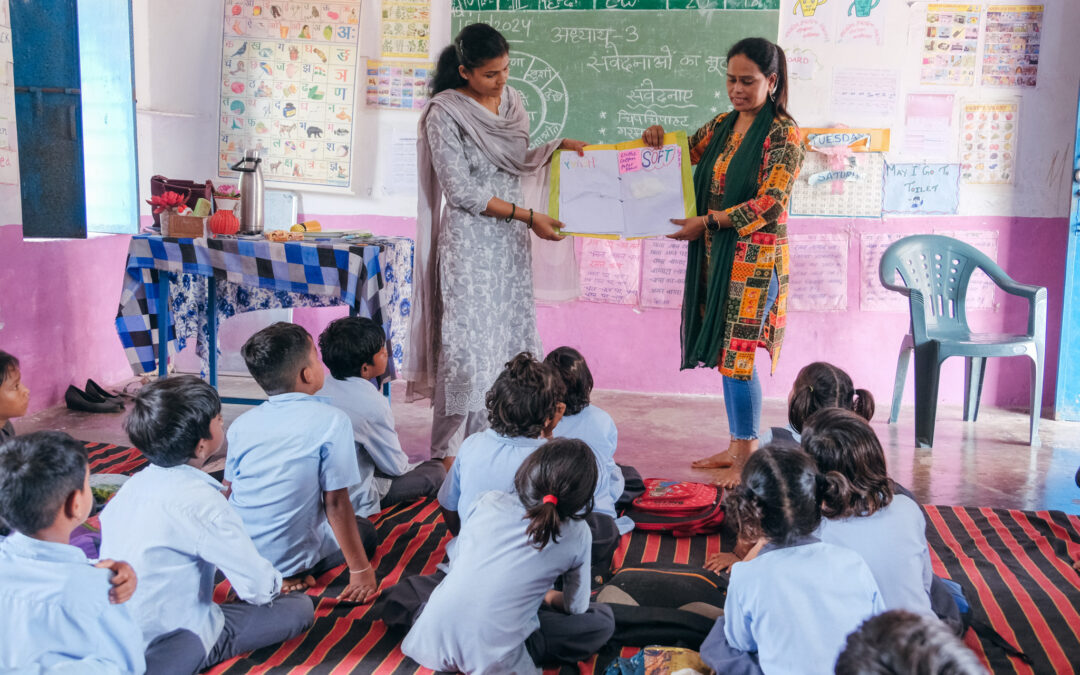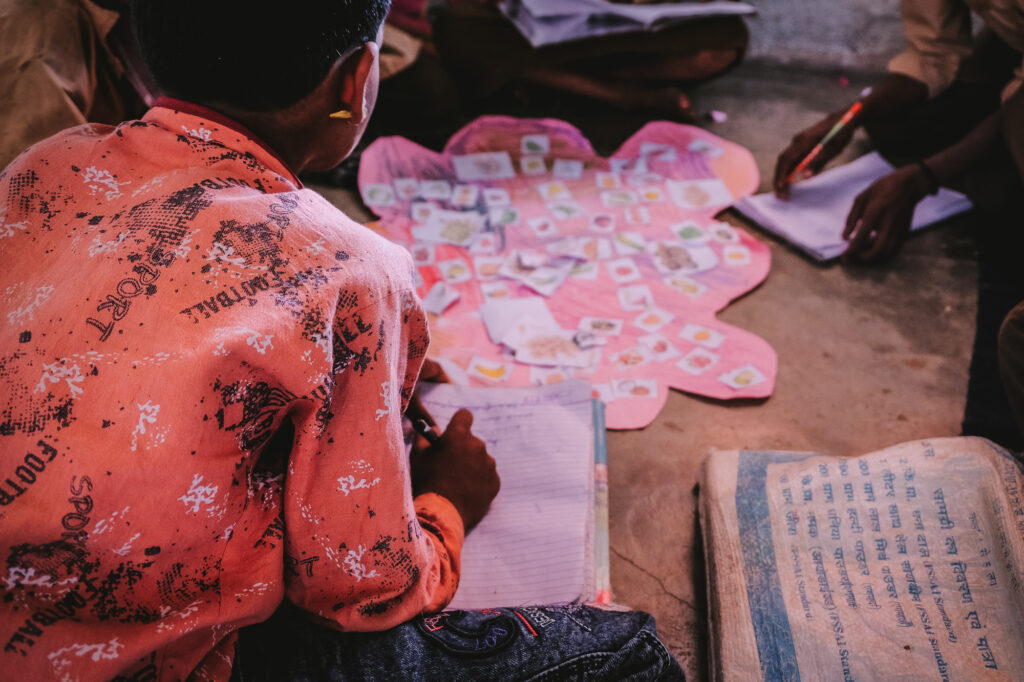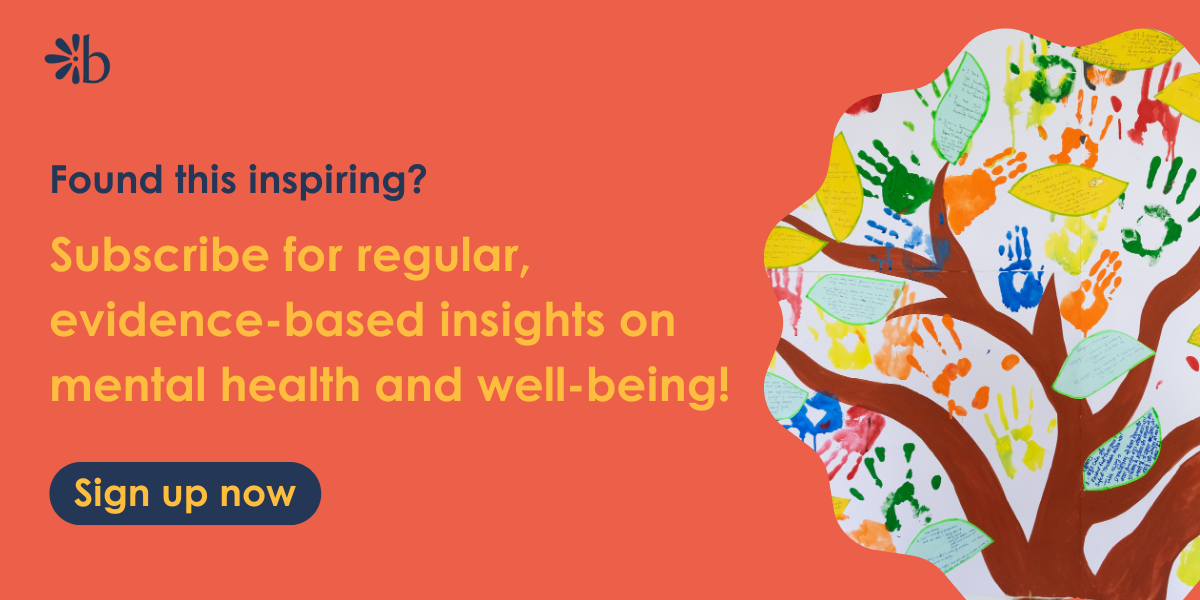Education is tasked with improving society in a myriad of ways— strengthening human development and flourishing; shaping future citizens; and cultivating the next generation of leaders and workers to fill the roles that are needed for societal functioning.
Yet education faces numerous challenges, reflecting the inequities and injustices that pervade society. School systems in particular are not always known for helping students thrive; in fact, sometimes they facilitate the exact opposite. Improving schools to improve education outcomes is not always straightforward, either. Public education can be further hindered by performative politics, inefficient spending, and capture by elite interests. There’s no surprise, then, that in many countries around the world, families with higher disposable incomes choose to send their children to private schools.
In communities where Brio works, however, government-run public schools remain a key anchor of everyday life, especially for marginalized children— offering opportunities to learn and grow that would not otherwise be available. In Rajasthan, for instance, government schools reach 3.3 million children ages 6-10 each year, and are responsible for their development as they enter the cusp of adolescence. More than 70% of children in India attend government schools, so the role they play— and their ability to effectively serve students— is critical to our shared future.
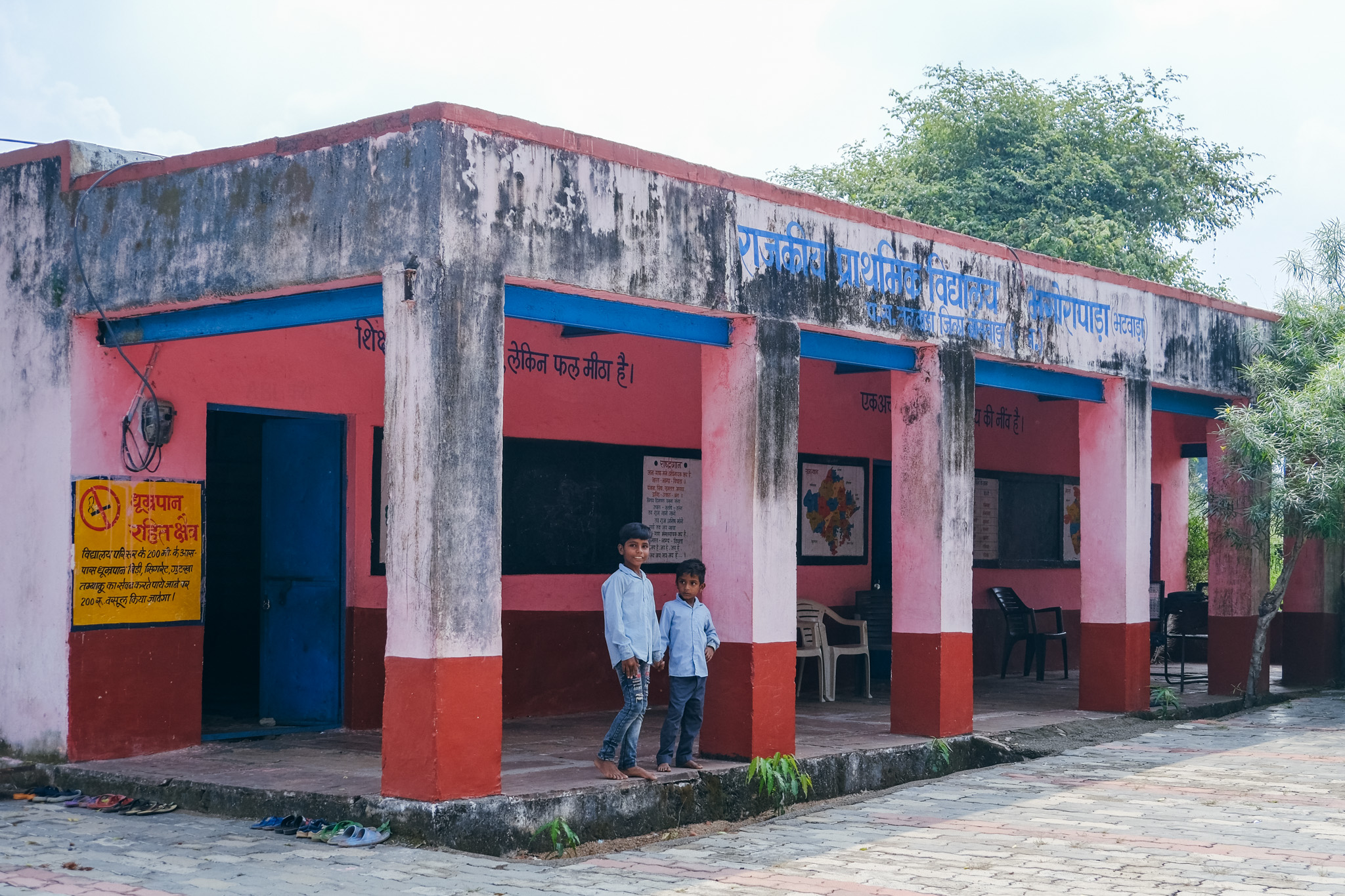
Without mental health, can education fulfill its purpose?
While schools are indeed a high-leverage channel for improving mental health, mental health also has the power to improve education outcomes. Their relationship is bi-directional. Through this lens, mental health is so much more than ill-health; it’s the ability to navigate our lived experiences toward more agency, vitality, and purpose. When children, teachers, and leaders strengthen their mental health, they improve the chances that education as a whole will achieve its high calling. And when we ignore the importance of mental health in education, we do so at our peril.
Many children in communities affected by violence, poverty, and poor health walk into school with complex emotions and inner experiences. Students are then expected to sit in a hot classroom and focus for several hours, internalize the information presented, and be ready to engage in activities and assignments. Without the ability to navigate their thoughts and feelings with greater flexibility and agility, children cannot be expected to gain very much from school.
Furthermore, teachers who live and work in these communities often face similar stressors. While government school teacher salaries are relatively high (in India), there are still difficult conditions and immense responsibilities that teachers must juggle every day. Under pressure and often staffing schools alone or only with a couple colleagues, teachers bear the full burden of delivering quality instruction, mentorship, and support to children in adverse circumstances. Without the ability to navigate their own stress, they’re unlikely to create nurturing classrooms, respond patiently to student needs, or find the margin to design creative lessons.
Finally, school leaders and education officials at every level are critical to flourishing classrooms as well. They, too, have immense burdens on their shoulders for making a vast, under-resourced system function. Within education bureaucracies there are many players, and those players can shift from year to year. In the Global South, most education systems could use a lot more funding— and more efficient deployment of funding— to reach the level of quality and support needed by students. This reality makes school leadership incredibly difficult.
All told, if education is a human right and a public good, then integrating mental health at every level is critical. Government school systems serve the most marginalized among us, and they do so at scale. If we want education to function better for the development and wellbeing of the next generation, we must consider mental health as a pillar of improving education as a whole.
What does it look like when we improve mental health?
1) Improving student mental health increases their agency to engage in learning.
Learning effectively begins with an inner sense of agency: the ability to choose where to focus our attention and stay mentally and emotionally engaged. However, in Rajasthan, where most children live in rural areas and attend government schools, students ages 8–10 in our pilot program reported lower perceived agency at baseline, especially girls. Agency was measured through their ratings of how difficult 14 key life skills were to do (effort-based self-efficacy); nearly 60% reported difficulty taking action on core life skills. Teachers also observed that girls in rural schools are less assertive with their feelings and preferences, often dropping out by adolescence. According to the National Family Health Survey (NFHS-5), this is partly due to limited mental models of possibility shaped by domestic labor and marriage.
Building agency starts from within: children exercise it when they have the freedom to choose how they respond to life’s challenges in ways that reflect their values. This skill, known in behavioral science as psychological flexibility, is the goal of Acceptance and Commitment Training (ACT), a mental health approach supported by over 1,000 RCTs. Through our Khushi Shala program, for example, we contextualize and teach psychological flexibility through three modules: Be Present, Have Compassion, and Do What Matters. Children build awareness of their inner experiences (thoughts, feelings, sensations), learn to hold them with openness and compassion, and choose what to do next based on personal and community values. These psychological skills are subtle at first but expand over time, shifting how children perceive their behaviors and their potential as future leaders.
When children are able to exercise these skills, they become more expressive, engaged, and curious about the world. This is critical to any type of learning— whether it’s foundational numeracy and literacy, collaboration with peers, helping family members, or advocating for themselves and each other. During our 2024 Khushi Shala pilot, 1,300 children showed statistically significant improvements in agency-related skills and behaviors, including emotional awareness, self-expression, and community engagement: 53% of all children and 69% of girls improved from pre- to post-survey, with a medium effect size within months. Children also attended school 10–15% more frequently, became more expressive in class, and found ways to help their peers.
If we want children to get as much as they can out of their educational experiences so that they can lead and thrive in the future, improving their mental health systematically is absolutely necessary.
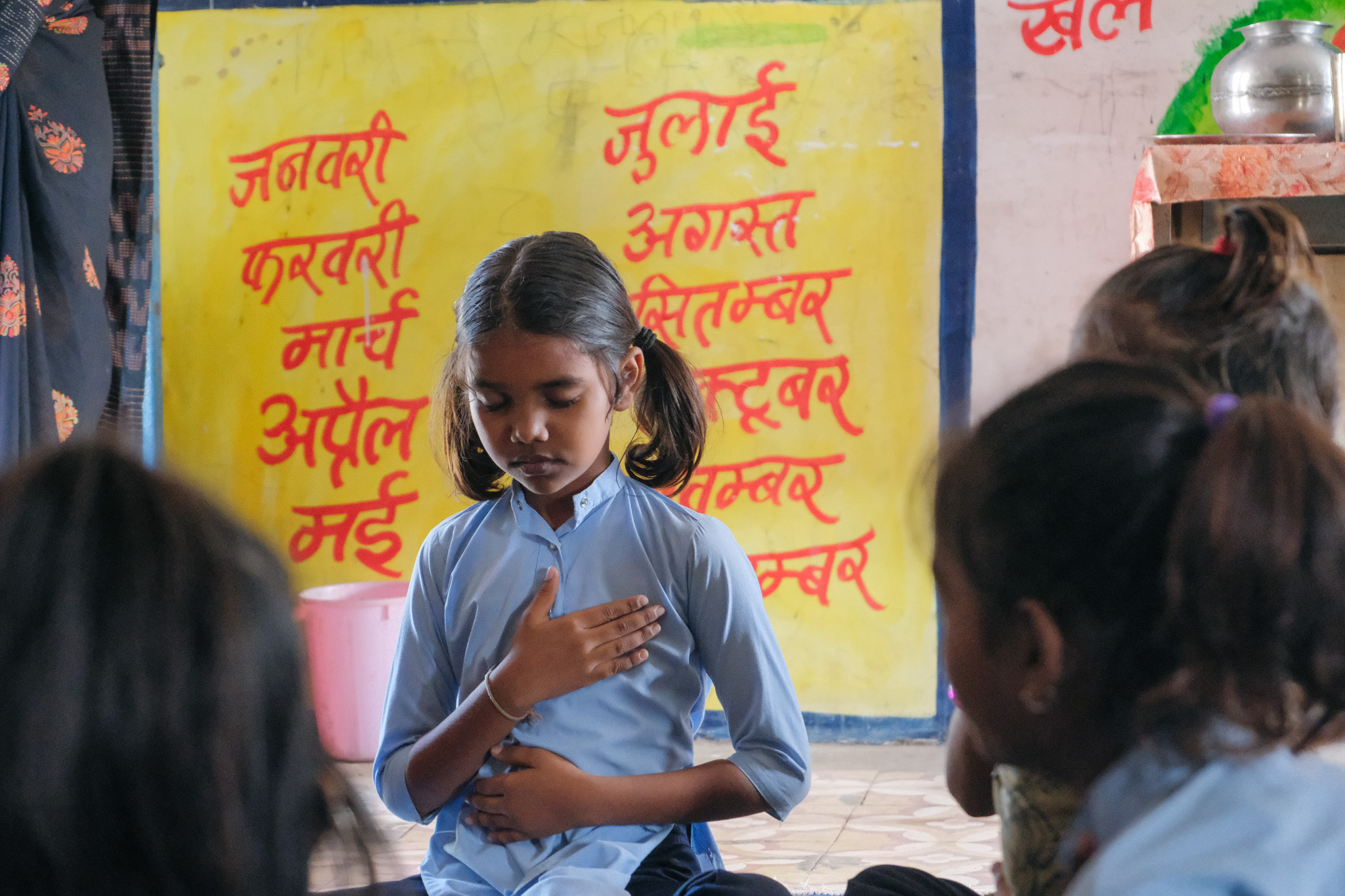
2) Improving teachers’ mental health increases their ability to thrive in a stressful but meaningful job.
Teachers are frontline workers— and in rural schools, they lead classrooms on their own with children of many ages, confronted by the social and environmental challenges of that context.
Educators in government systems are responsible for much more than effective teaching, which is already a challenging undertaking. In fact, they can often be repurposed as a government workforce for other functions, including facilitating the voting process or serving as public health ambassadors during a pandemic. Furthermore, teachers are required to participate in trainings of all kinds— and while much of the intention is for teacher professional development, quality varies greatly, and so does impact (see Accelerating India’s Development by Karthik Muralidharan).
Since 2020, we’ve been partnering with Kshamtalaya to deliver Hausla, a 21-day teacher mental wellbeing program, that is tailored to the lived experiences of teachers. Also drawn from the ACT framework, Hausla offers daily audios (originally designed during Covid and since updated) to help teachers build up their mental health baseline. Teachers who participated in Hausla demonstrated improvements in their wellbeing, resilience, mindfulness skills, and psychological flexibility— according to validated scales for each construct. In addition to improving on these measures, many of the 124,000 teachers who have participated in the Hausla program reported a better understanding of their own inner experiences. They have shared anecdotes about how it has improved their relationship with children, the patience and energy they bring to the classroom, and their ability to respond to stressful situations.
Teacher engagement, commitment, and care for students is a key determinant of education outcomes. No matter how much training or external incentives they’re provided, their ability to navigate their own experiences will have an outsize effect on the quality and sustainability of their teaching.
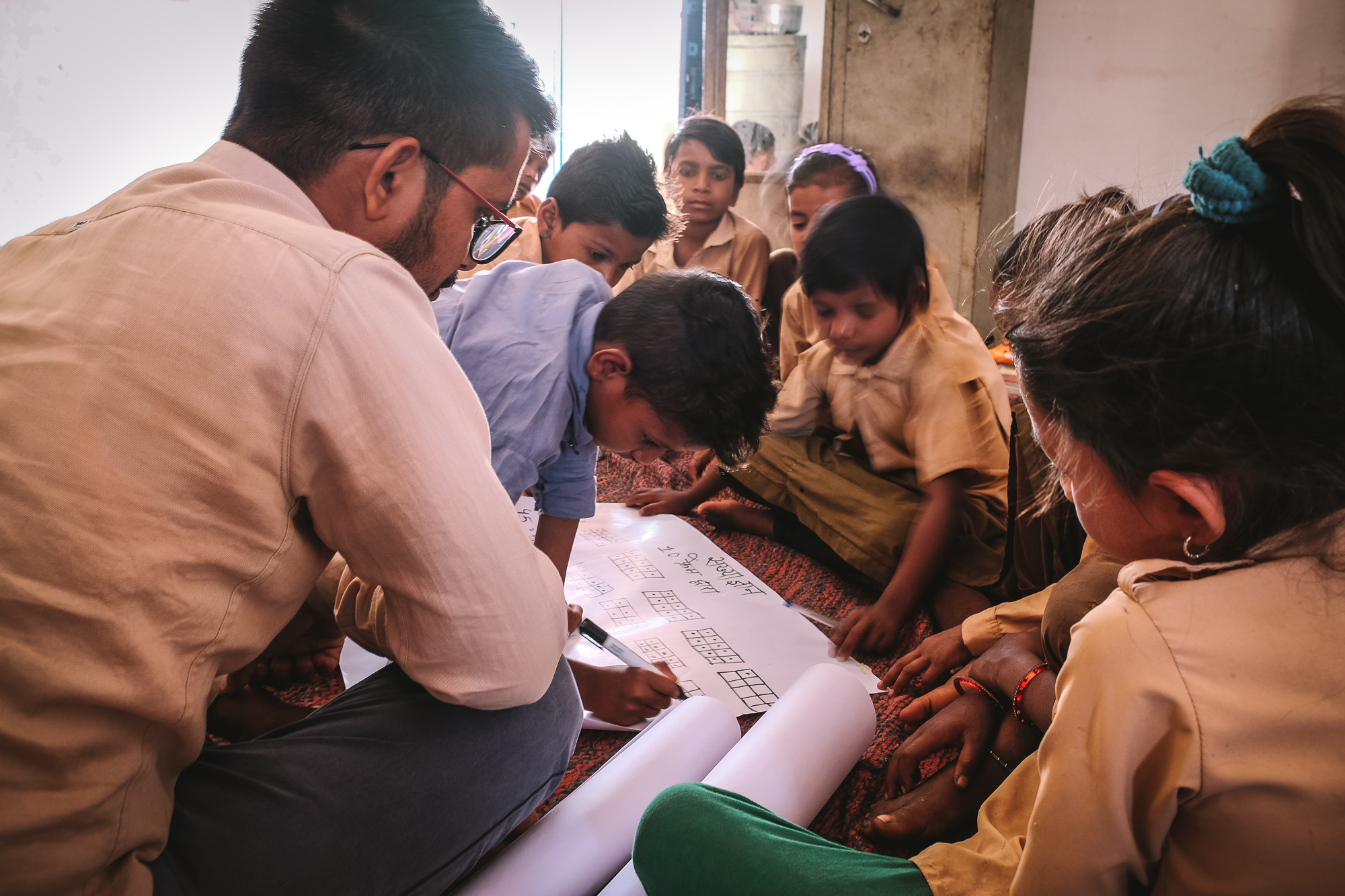
3) Improving school leaders’ mental health increases their creativity and commitment in the midst of systemic challenges and constraints.
School leaders and officials lead the education system, where they navigate numerous priorities, complex relationships, and limited resources on a daily basis. When we speak with school leaders and education bureaucrats, many of them are deeply motivated to improve outcomes for children. These leaders are what Dan Honig calls Mission Driven Bureaucrats: people who are motivated not by external incentives but because they genuinely believe in this work.
Values-driven action is at the core of positive mental health— it allows us to get beyond our emotional reactivity to choose to do what matters most, even in the presence of hardship. The goal of psychological flexibility is to navigate our inner experiences with a sense of purpose and stability; that’s the behavior change mechanism that ultimately helps people across the mental health spectrum to live meaningful lives.
In our experience offering Hausla to education officials in their offices, we found improvements specifically in psychological flexibility measures (AAQ-II), and also a shift in their posture towards their work. Long-term engagement in large bureaucratic systems can lead to a sense of powerlessness. It is true that many departments within the government system are unable to operate independently; the conditions in which they work are determined by an intricate web of others, so the range of their agency can feel quite narrow.
However, with the skills of psychological flexibility and positive mental health, they’re able to not only sustain their commitment to their roles with emotional agility and endurance, but also to become more creative about the possibilities that are within their control. When we collaborated with these leaders to design Khushi Shala, we appreciated their ability to take what they’ve learned about personal wellbeing and apply it to the vision and design of children’s curriculum and teacher training. In a system where many processes feel rigid or ineffective, bureaucratic leaders who are creative, curious, and committed can make all the difference. It starts with improving their mental health skills as well.
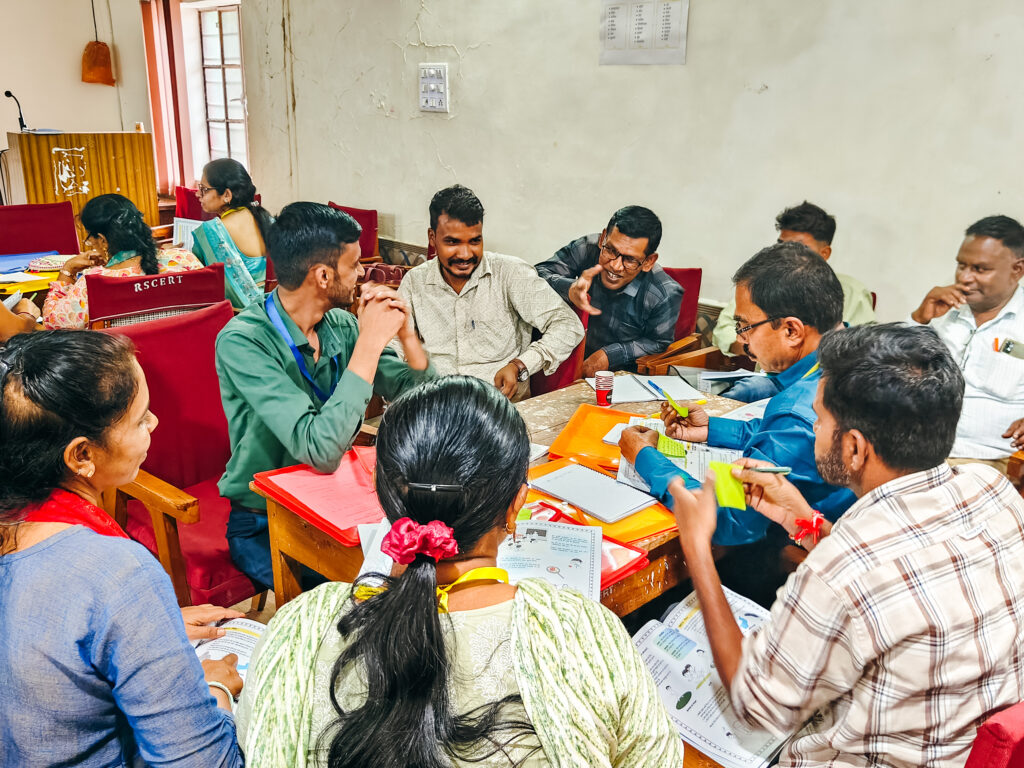
If we improve mental health for students, teachers, and systems leaders, we improve education.
We’re arguably heading toward a world where the horizon of visibility is vanishingly close. With technological advances (including AI in education), shifting global power dynamics, climate change, and ongoing violent conflicts, it’s nearly impossible to imagine what our world will look like in a handful of years. All we can count on is turbulence and uncertainty.
If education is to prepare the next generation for an unseeable future, we’ll need creative, resilient, and flexible individuals at all levels leading the way— and children who can navigate uncertainty with agency and courage.
For this, improving mental health is indispensable.

